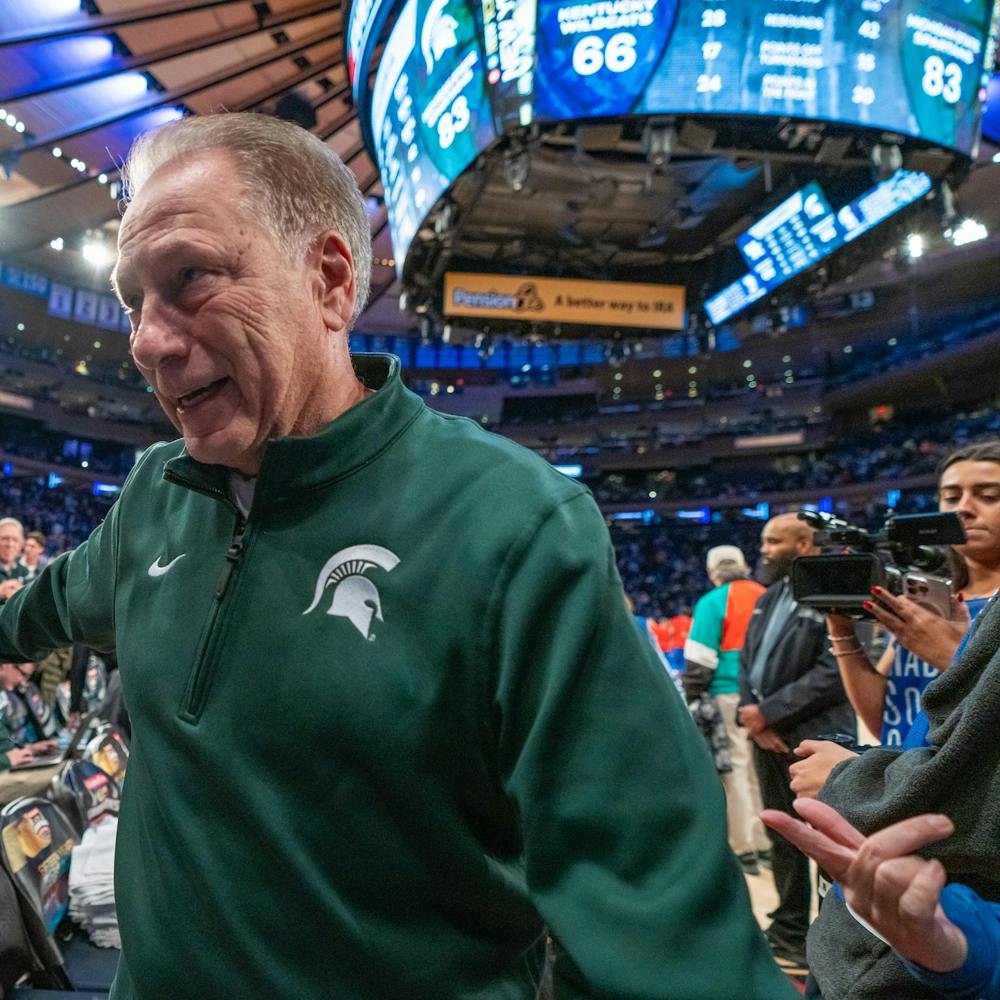With graduation just a few weeks away, most seniors will tell you the same thing: Those four years went by a little too quick.
Now, shave a year or two off those four and imagine how fast that would fly by.
That’s the reality a group of students are facing this spring. Michigan State University’s graduating transfer students didn’t start off their journey in East Lansing, but they’ll be wrapping it up just the same as everyone else.
That segment of the student populace arrived at MSU from a variety of destinations: community colleges, other in-state universities and academic institutions across the nation. While their alternate path doesn’t necessarily reflect the majority of this year’s graduating seniors, MSU’s transfer students are more than content with their journey to graduation.
“There’s a certain degree of life experience you get from community college, because everything doesn’t revolve around school,” communications senior Hailey Schulte, a transfer student from Oakland Community College, said. “You get to talk to a lot of different people.”
An altered academic path and slightly less crippling debt
Political science and advertising management senior Will Hansen transferred to MSU after completing three semesters at Northwestern Michigan College, a community college in Traverse City.
“It was a couple of different things, but mostly it came down to cost,” Hansen said. “I’m funding college currently by myself.”
MSU’s in-state yearly tuition is currently an estimated $15,436 — not including room and board. Meanwhile, the average annual tuition for a community college in Michigan comes in at just under $6,000, according to CollegeCalc. That’s not to mention the multitude of local programs across the state that support high school graduates looking to take a more affordable approach to education.
Locally, Lansing Promise provides tuition assistance for up to 65 credit hours, plus book costs, for high school graduates within the Lansing School District.
“That helped make my decision, obviously,” advertising management senior Lucas Sambaer said.
In short, for many, an altered academic route is well worth the significantly more affordable costs.
It’s not all about the money, though. There’s a handful of reasons that students are making their way to East Lansing using a slightly different path. There could be a desire for a more palatable transition into college or simply not knowing what major to choose.
Plus, while a good chunk of transfer students leapt to MSU from their local community colleges, a portion also came from other universities across the country.
“We have a student who came from Louisiana State University, there’s a couple that came from California,” student affairs administration graduate student Lia DeGroot, who works with the Transfer Student Advisory Board as part of her practicum, said. “I can’t remember some of the other states, but we do have a decent mix of four-year universities and two-year universities.”
Food science senior Winter Graham transferred to MSU as a junior last year, traveling an hour down US-127 from Central Michigan University.
After finding that CMU’s dietetics program didn’t quite fit her needs, Graham decided it was time to find a better academic fit within the state.
“I loved my time at Central, it just really didn’t work out with the program,” Graham said. “I just decided to prioritize what I knew I was interested in doing.”
Transitioning to a Big Ten university and creating new connections
Again, not all transfer students are jumping from an identical starting point. But the landing spot is the same: a Big Ten university with nearly 40,000 undergraduate students, spanning 5,200 acres.
That’s a big leap for anyone and transfer students don’t have that initial dorm experience to build up a network of friends right away.
“I did think that, not living in the dorms, you definitely don’t have the same experience,” Hansen said. “I have friends that came here right out of college, their friend groups are people that they met at the dorms, whereas mine are people that I’ve either known through different organizations or have met at work events."
That puts many in a strange spot: the academic experience of a sophomore or junior, with the campus knowledge of a freshman.
Luckily, some of MSU’s transfer students said they don’t feel all too different as a result of their altered track to East Lansing. In fact, they said the occasional stigma that accompanies the label of “transfer student” doesn’t appear to be too prevalent in East Lansing.
“I think it’s more of a stigma in high school,” Sambaer said. “In college, I don’t think people look at community college like that, just because they know how college is. They know how expensive it is.”
The Transfer Student Advisory Board is a group on campus trying to create a community specifically for Michigan State’s transfer students, helping newcomers ease into the campus culture.
The board is growing, with plans for a mentorship program and other student-oriented initiatives in the works.
“We’re really just trying to build a community around transfer students,” Sambaer, a member of the group, said. “We want people to be proud that they’re a transfer student, that it’s okay to be a transfer student.”
However, many transfer students elect to forge their own path once arriving on campus. Without that initial dorm experience, they have to be more proactive about their networking. That often involves signing up for a host of new clubs and groups.
Upon arriving on campus, Graham joined a club directly related to her major — the Food Science Club. Becoming a member of that group quickly helped her make new connections in both a professional and personal sense.
“Joining clubs has been so essential for me; I’ve made so many lifelong connections with faculty and students,” Graham said. “As a transfer student, you’ve got to put yourself out there more. It never hurts to try.”
Hansen and Schulte both forged similar paths, meeting other students through clubs related and unrelated to their majors.
MSU’s transfer students arrive at campus from so many different places and regions, it’s impossible to lump such a diverse populace into one singular group. But nearly every single one will pass on the same piece of advice to students taking a similar path: ignore that transfer student label and go put yourself out there.
Get involved on campus, meet new people. Arriving slightly late to campus doesn’t mean one can’t build up and find that network of friends that most four-year students depart MSU with.
“Don’t be afraid to get involved in things — don’t wait just because you’re a transfer student,” Schulte said. “Go out and look at the posters, get involved and make friends — even if they’re freshmen.”






